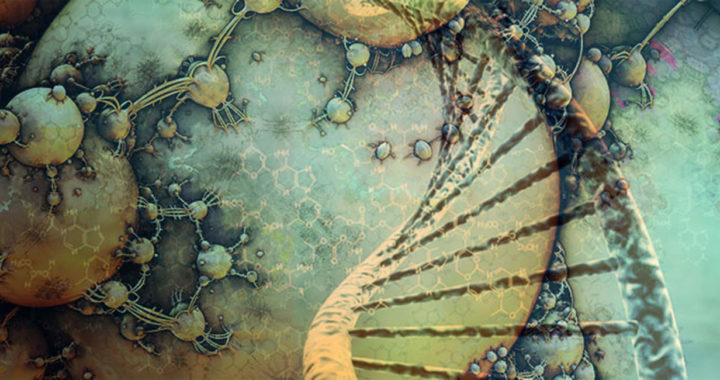Imprinted deeply in the human genome are traces of ancient retroviruses that infected pre-human ancestors about 2 to 60 million years ago. Specifically, through the natural process of evolution and other biological mechanisms, these traces have found their way in human DNA and become human endogenous retroviruses.
What is a Retrovirus? What are Endogenous Retroviruses?
Endogenous retrovirus are endogenous viral elements within a genome with DNA sequences derived from viruses. Hence, although they have similarities with present-day exogenous retroviruses, they are not actually viruses or retroviruses but mere traces or remnants. This is the reason why they have also been called fossil viruses. In addition, these endogenous retroviruses have become part of the entire genetic makeup of a particular organism.
Moreover, to understand what endogenous retroviruses are, it is imperative to first understand the difference between a regular virus and a retrovirus. Take note that infections from viruses can result in the direct death of host cells. Infections from retroviruses such HIV-1 and HIV-2 do not result in direct cell death. Instead, when retroviruses infect cells, they merge with them. The genetic material of retroviruses is also always RNA while regular viruses is either DNA or RNA.
Retroviruses behave like transposable elements because they are able to insert copies of themselves into the genome of the infected or host cells through reverse transcription. A cell infected with a retrovirus would thereby divide and propagate, and further carry the genetic code of the viral pathogen in its genetic code. It is worth noting that this is also the reason why HIV is hard to eliminate once it is inside a host cell and HIV infection is hard to cure.
What are Human Endogenous Retroviruses? Are Humans Made of Viruses?
The separate studies of Kalliopi Dodou and Paul Whiteley, and O. Diem et al. explained that the presence of human endogenous retroviruses in the human genome is a result of the evolutionary war with microscopic invaders. Ancient retroviruses barraged the population of primitive primate species, thus infecting the host bodies, and inserting their copies into the genome of infected cells. The immune system was able to thwart off these ancient viral invasions, but the viral DNAs remained imprinted in the genome of the surviving species, thus passing them to its direct offspring and further to its evolutionary offsprings.
In other words, the viral elements or fragments in the human genome are a result of immune responses to ancient viral infection affecting an ancient species or pre-human ancestors. Researchers K. Dodou and P. Whiteley noted that the genetic mutations that transpired throughout the evolutionary history of the human race resulted in the inactivation of these viruses. The review of Diem et al. further explained that efficient cellular mechanisms like DNA methylation, chromatin remodeling, post-transcriptional processing, and RNA interference have evolved to restrict the intercellular activities of HERVs.
What Are the Risks Associated with Human Endogenous Retroviruses?
Several health conditions have been associated with high transcription levels of human endogenous retroviruses. Some studies have suggested a link between HERVs and schizophrenia. Observations from animal models also revealed that recombination between a retrovirus and a HERVs sequence could result in the emergence of a new retrovirus with unique viral characteristics that can bring forth novel health implications.
Not all human endogenous retroviruses have pathogenic potentials. The comprehensive analysis of Wolfgang Seifarth et al. identified several classifications of human endogenous retroviruses that have beneficial functions in the human body. The HERV-encoded Env proteins, for example, have a role in suppressing the possible harmful immunological response of a maternal body against a fetus. Two suppressor genes derived from HERVs prevented the spread of a viral infection in a developing fetus based on animal model.
Endogenous retroviruses essentially have either a parasitic relationship or symbiotic relationship with their hosts. A particular endogenous retrovirus can be regarded as partly a virus and partially a gene or genetic material. Nevertheless, although evolution and biological processes have eliminated the general pathogenic characteristics of these viral elements, some sequences have retained several degrees of pathogenicity.
Additional Information About Human Endogenous Retroviruses
The human genome contains multiple classes of HERVs that vary from single-copy elements to families containing hundreds or thousands of members. Research revealed that fragments or DNA sequences of human endogenous retroviruses account for at least 8 percent of the human genome.
Seifarth et al. concluded that most active human endogenous retroviruses were found in mRNA prepared from the skin, thyroid gland, placenta, and tissues of reproductive organs. The least inactive HERVs were detected in rectum, stomach, heart, and skeletal muscle.
Viral elements indeed lurk in the human genome, and some of them have the potential to cause diseases while others have beneficial roles. Nevertheless, it is interesting to underscore the fact the human genome is partly made of genetic materials from ancient viruses.
FURTHER READINGS AND REFERENCES:
- Diem, O., Schäffner, M., Seifarth, W., & Leib-Mösch, C. 2012. Influence of Antipsychotic dDugs on Human Endogenous Retrovirus Transcription in Brain Cells. PLoS One. DOI: 10.1371/journal.pone.0030054
- Dodou, K. & Whitely, P. 2014. We Are All Part Virus—The Role of Human Endogenous Retroviruses. The Pharmaceutical Journal. Available: online
- Leboyer, M., Tamouza, R., Charron, D., Faucard, R., & Perron, H. 2013. Human Endogenous Retrovirus Type W in Schizophrenia: A New Avenue of Research at the Gene-Environment Interface. The World Journal of Biological Psychiatry. 14(2): 80-90. DOI: 10.3109/15622975.2010.601760
- Seifarth, W., Frank, O., Zeilfelder, U., Spiess, B., Greenwood, A. D., Hehlmann, R., & Leib-Mösch, C. 2005. Comprehensive Analysis of Human Endogenous Retrovirus Transcriptional Activity in Human Tissues with a Retrovirus-specific Microarray. Journal of Virology. 79(1): 341-352. DOI: 10.1128/JVI.79.1.341-352.2005
